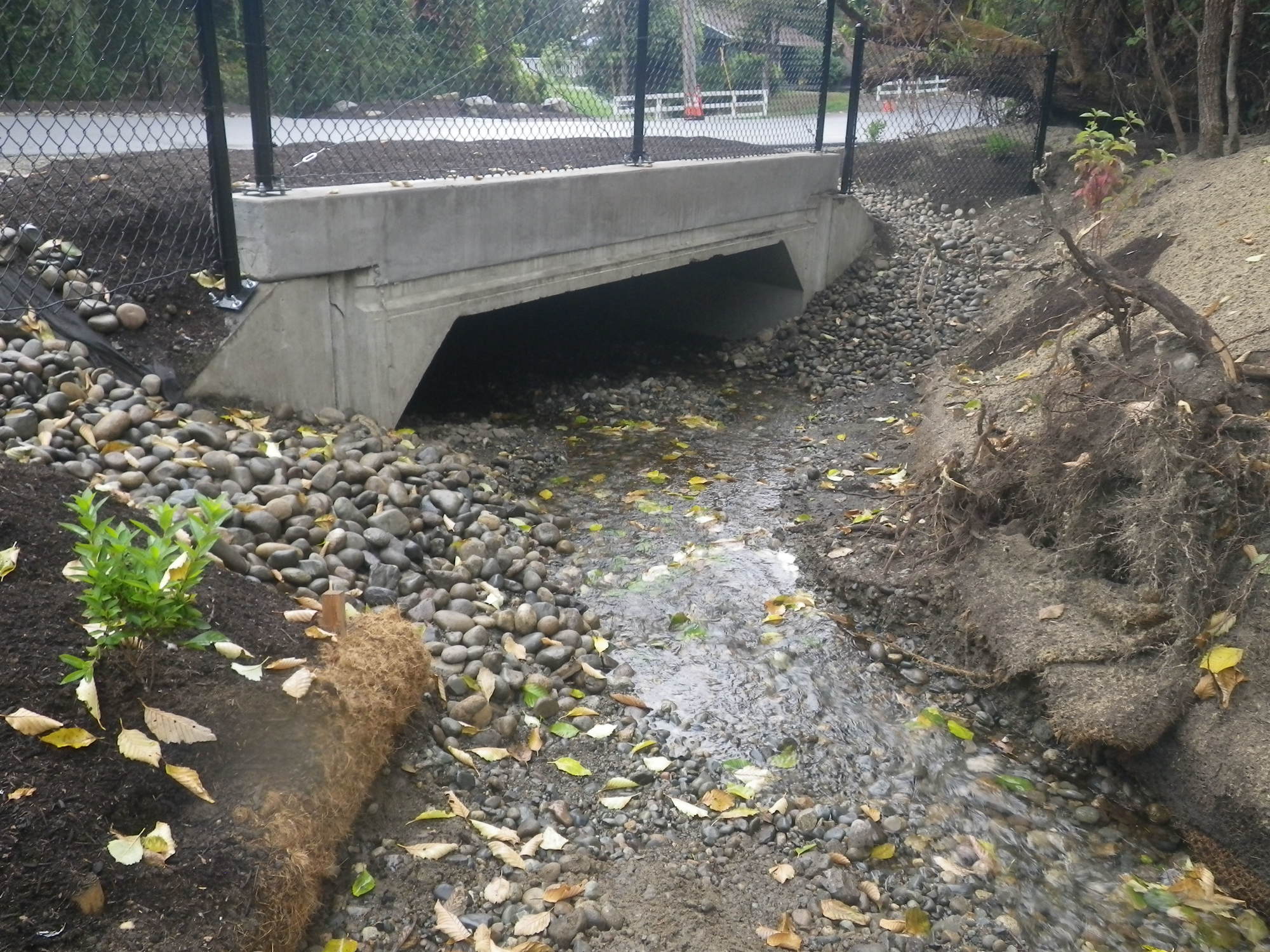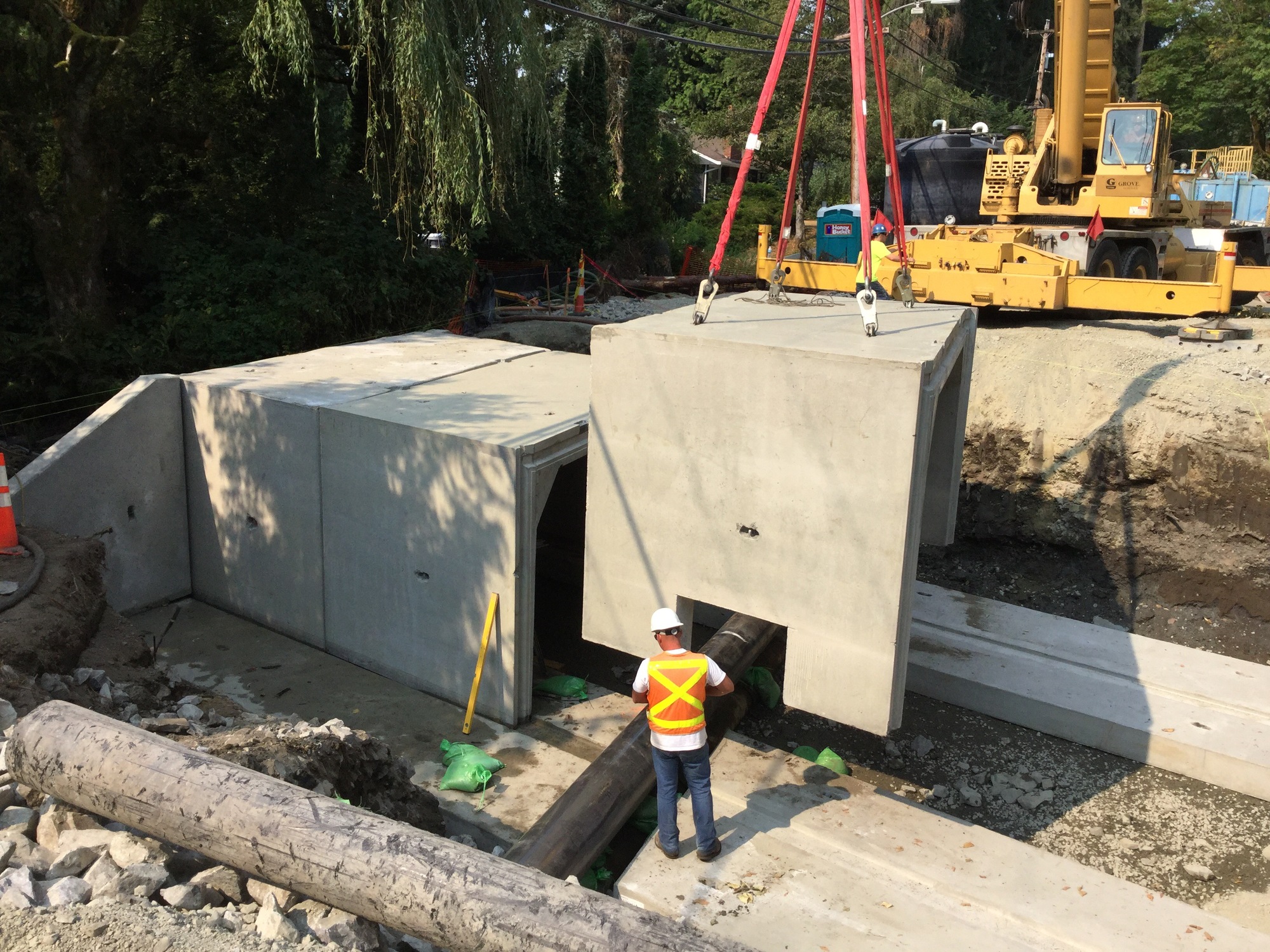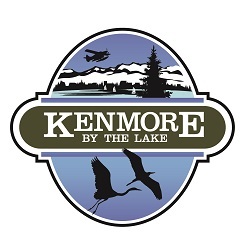You Are Invited to the Culvert Replacement Ribbon Cutting Ceremony
City of Kenmore Washington sent this bulletin at 10/18/2017 03:56 PM PDTNE 192nd Street Culvert Replacement Project Complete
NEW FISH FRIENDLY CULVERT TO IMPROVE WILDLIFE HABITAT AND REDUCE FLOODING
 Prior conditions |
|
 After completion After completion
|
The City of Kenmore is proud to announce the completion of the NE 192nd Street Culvert Replacement project. Replacing a small metal pipe, the new culvert over Little Swamp Creek will:
- Eliminate a chronic, decades-old flooding problem, and
- Improve fish passage and wildlife habitat
Join us for a ribbon cutting ceremony to celebrate the project completion and thank our neighbors for their courtesy. There will also be hot chocolate!
When: Tuesday, October 24, from 12:00 p.m. – 12:30 p.m.
Where: NE 192nd Street between 68th and 73rd Avenues NE, in front of the culvert (starred location on map below). Please park at the City Hill Northshore Church and walk west along the north shoulder of NE 192nd Street to reach the destination.
 Click on the image above for directions to the ribbon cutting. |
What is a culvert?
A culvert is a tunnel structure that allows water to pass under a road or railway. The culvert underneath NE 192nd Street carries flows from Little Swamp Creek, which runs up 80th Ave NE into neighboring cities to the north.
Why was it replaced?
This “little” creek carries runoff from roughly 750 acres of upstream area, mostly beyond the City limits. The flashy nature of this urban stream has led to repeated flooding of the roadway which required City resources to manage, disrupted traffic flows, risked damage to the City’s roadway, and negatively impacted aquatic and amphibious wildlife in surrounding areas.
What did the project cost and how was it funded?
The total project cost, including design, construction, permitting, and project management was $1,235,000*. The King County Flood Control District provided several grants totaling $497,000. Northshore Utility District provided $102,500 for the project, and the remainder of the project cost was funded from the City’s Surface Water Utility.
*Includes $110,000 in delay cost tendered to third party for payment.
What did the project include?
A new fish-passable culvert was selected as the best alternative to replace the existing 36” diameter corrugated metal pipe. The City collaborated with the King County Flood Control District on a grant opportunity to address flooding issues and received a portion of the project funding via the grant.
The new concrete box culvert is 60 feet long, 12 feet wide, and seven feet tall, with much of the structure now buried. While there were significant challenges in this approach, such as having to raise the road in order to maintain creek elevations and still allow for minimum clearances, this design allowed the City to eliminate flooding at this location while also making significant improvements for wildlife habitat.
Little Swamp Creek and the areas around the culvert were identified as critical habitat for bull trout and Chinook salmon, with additional habitat for steelhead trout, sockeye salmon, and western toads. The culvert design and re-grading sought to reduce velocities in the stream to allow for juvenile fish to be able to swim upstream to prime spawning habitat just north of culvert. The stream channel bed was recreated with small pools to allow fish to rest and with small benches of rock to allow toads or other amphibians to find refuge within the culvert. Additionally, plants and vegetation were specifically selected to promote habitat creation and a healthy stream system.
What else is Kenmore doing to improve habitat areas?
This project was just one piece of a significant effort to restore the Little Swamp Creek basin within the Kenmore limits. Private property owners south of the culvert previously completed a stream restoration project and recent private development north of the culvert was required to set aside more than 2.9 acres of permanent open space for habitat. Additional permanent open space tracts created through development and capital projects north of the culvert now total more than 55.5 acres (including the City-owned Twin Springs Park). The City’s critical area regulations apply significant buffers for protection of the habitat areas during potential future development. The City’s long-term plan includes projects to continue improvement up the stream corridor to shift the stream away from the urban roadway and provide additional environmental enhancements within the open spaces that have been assembled.
To view the project page, visit www.kenmorewa.gov/content/ne-192nd-street-culvert-replacement-project.


